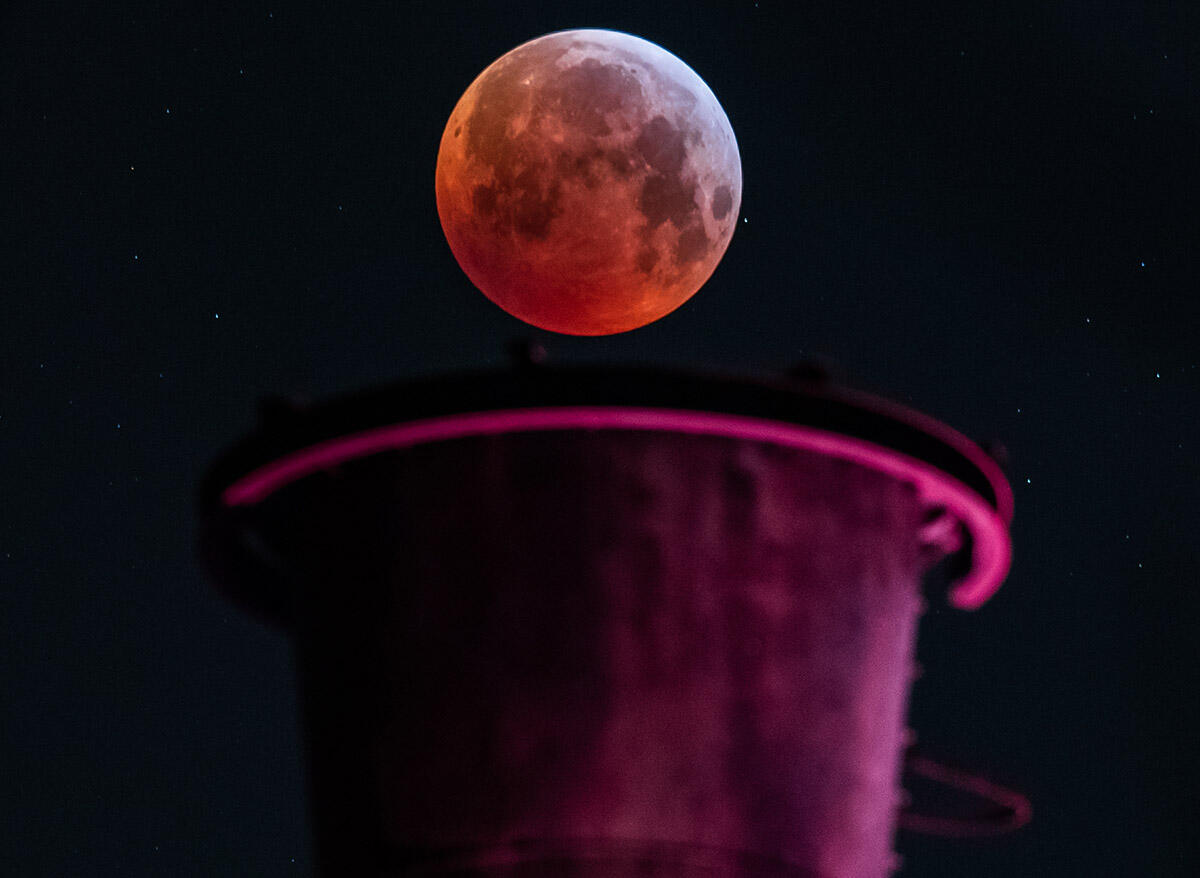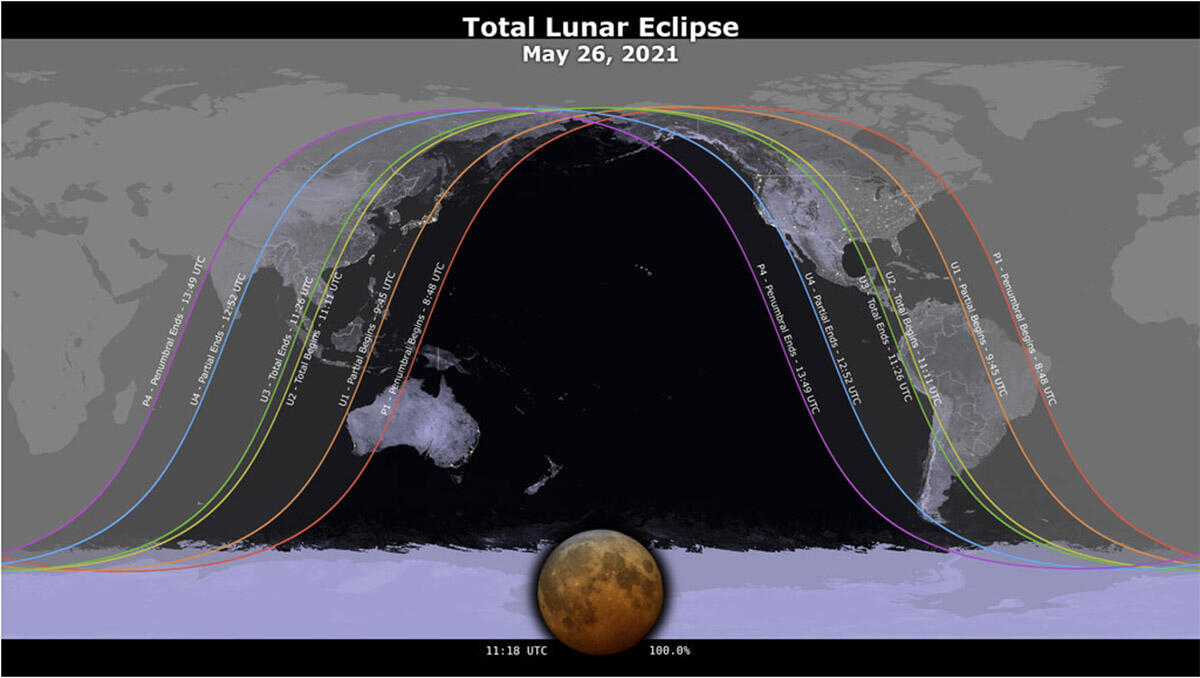
Lunar eclipse trifecta: How to see this week’s super flower blood moon
A full moon, a total lunar eclipse and a supermoon will occur on May 26, creating a stunning effect in the night sky. Here’s where and how to see these celestial events.

Image: Marcel Kusch/DPA/AFP/Getty
No gambling needed for astronomy fans. This week they’ll hit the jackpot with a lunar eclipse trifecta: A full moon, a total lunar eclipse and a supermoon will occur on the same day. This rarity will be visible across the western U.S. beginning at 1:46 a.m. PT according to NASA.
SEE: Lunar Eclipse: Dark sky images of a super blood moon (TechRepublic)
What is a lunar eclipse
A lunar eclipse is when the sun and the moon are positioned precisely on opposite sides of the Earth. This causes the Earth to block some of the light from the sun to not reach the moon, so it gives the moon a rosy glow.
When will the total lunar eclipse occur
On May 26, the lunar eclipse will begin at 1:46 a.m. PT. Totality will occur between 4:11 a.m. and 4:26 am. PT. The lunar eclipse will last until 5:53 am PT.
What is a flower moon
In May, the full moon is known as the flower moon since May is the month of flowers in full bloom. This will also be the largest full moon of the year, making it a supermoon. On top of that, it’s also going to be red, giving it a blood moon effect, according to NASA.
On May 26 at 6:13 a.m. ET, the moon will reach its full stage and the flower moon begins and will last for three days.
Why this lunar eclipse matters
This is the first total lunar eclipse in nearly six years, and the next one won’t occur over North America until May 2022, according to NASA.
How to see the lunar eclipse and supermoon

This map shows where the May 26 lunar eclipse is visible. Contours mark the edge of the region where the eclipse will be visible at the times when the moon enters or leaves the umbra (the part of the Earth’s shadow where the sun is completely hidden) and penumbra (the part where the sun is only partially blocked).
Image: NASA’s Scientific Visualization Studio
First, a clear sky is needed. People all over the world will be able to see at least some of the supermoon. It’s basically a big, bright version of the full moon, and this one will have a red glow, giving it the blood moon moniker. It will be highest in the sky late at night and in the early morning hours.
The lunar eclipse is visible for a much shorter time, and it will need to be viewed when the moon is deepest in shadow. It will last for approximately 15 minutes in each part of the world it travels through. The total lunar eclipse will be visible close to the time of moonset in the western U.S. and Canada, all of Mexico, most of Central America and Ecuador, western Peru, and southern Chile and Argentina. In the Asian Pacific Rim, just after the moon rises, the total eclipse will be visible, according to NASA.
For the partial eclipse, this will take place as the moon moves into and out of the Earth’s shadow. This will be visible from the eastern U.S. and Canada right before the moon sets in the morning and from India, Nepal, western China, Mongolia, and eastern Russia immediately after the moon rises in the morning, according to NASA.
People in eastern Australia, New Zealand, and the Pacific Islands, including Hawaii, will see both the total and the partial eclipse, according to NASA.
Also see
Stay connected with us on social media platform for instant update click here to join our Twitter, & Facebook
We are now on Telegram. Click here to join our channel (@TechiUpdate) and stay updated with the latest Technology headlines.
For all the latest Technology News Click Here
For the latest news and updates, follow us on Google News.


